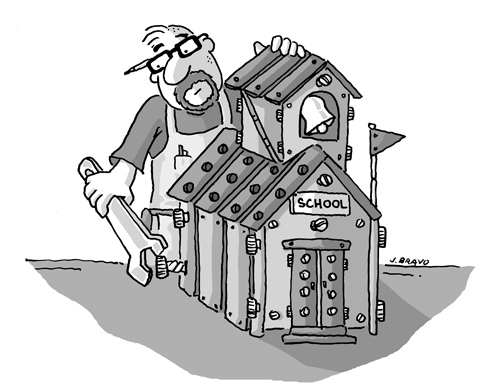I’m writing this blog from the inside of an airplane high above the Atlantic. I have total confidence that my plane will deliver me safely to Europe. It’s astonishing. The people who run every aspect of this plane are ordinary folk. I knew a guy in college who spent his entire career as a pilot for the very airline I’m flying today. He was competent, smart, and very, very careful. But he was not expected to make things up as he went along. He liked to repeat an old saying: “There are old pilots and there are bold pilots, but there are no old, bold pilots.”
When I was younger, I recall that airplane crashes were relatively common. These were always prominently reported in the news. But today, airplane disasters not caused by terrorists or crazy people are extremely rare. The reason is that air disasters are so catastrophic that airlines have adopted procedures in every aspect of their operation to ensure that planes arrive safely at their destinations. Every system important to safety is checked and rechecked, with technology and humans backing each other up. I happen to have a nephew who is studying to be an aircraft mechanic. His course is extremely rigorous. Most people don’t make it through. His final test, he says, will have 80 questions. The minimum acceptable score: 80. His brother is a nuclear engineer on a navy submarine. Same kind of training, same requirement for success. No room for error. The need for such care in airplanes and submarines is obvious. But why not in education?
My friend and colleague Sam Stringfield had this idea many years ago. Based on it, he and a Welsh colleague, David Reynolds, created what they called “high-reliability schools.” They evaluated them in Wales, and found substantially greater gains in schools using this approach than in control schools.
Despite its success, the high-reliability idea did not catch hold in education. Yet any student who is unnecessarily failing in school is a catastrophe waiting to happen. You don’t need a lot of data tables to be convinced that students not reading well by third grade are headed for big trouble. They are disproportionately likely to end up in special education, to repeat one or more grades, to drop out of high school, and to get into behavioral difficulties and problems with the law. Each of these outcomes is hugely damaging to the student and hugely expensive to the taxpayer.
Yet there is no problem in all of education that is better researched than early reading failure. There are many proven strategies known to greatly reduce reading failure: whole school methods, small group, individual tutoring, technology, and more. Our Evidence for ESSA web site lists dozens of proven approaches. It is probably already the case that any school could identify students at risk of reading failure in kindergarten or first grade and then apply proven, easily available methods conscientiously to ensure that virtually every child will succeed in reading.
The point here is that if we wanted to, we could treat early reading the way airlines and submarines treat safety, as a life or death issue.
If schools accepted the high-reliability challenge for early reading, here is what they would do. First, they’d adopt proven pre-reading programs for pre-kindergarten, and then proven beginning reading programs for grades K-3. Teachers of these grades would receive extensive professional development and then in-class coaching to help them use these proven strategies as well as they were used in the research that validated them, or better.
Starting in kindergarten, we’d start to assess students in early reading skills, so we’d know which students need assistance in which specific skills. We’d continue to assess all students over time to be sure that all are on a path to success. The assessments would include vision and hearing so that problems in these areas are solved.
Each school would have staff trained and equipped to provide an array of services for students who are in need of additional help. These would include small-group tutoring for students with mild problems, and one-to-one tutoring for more serious problems. Multiple proven programs, each focusing on distinct problems, would be ready to deploy for students who need them. Students who need eyeglasses, hearing accommodations, or other health assistance would be treated. Students who are English learners would receive assistance with language and reading.
The point is, each school would be committed to ensuring the success of every child, and would be prepared to do so. Like my high-reliability nephews, the goal of every person in every school would be zero failures. Not just fewer. Zero.
There is no question that this goal could be accomplished. The only issue is whether it could be accomplished at a cost that would be politically acceptable. My guess is that a full-scale, replicable schoolwide strategy to ensure zero reading failures in high-poverty schools could add about $200 per child per year, from grades pre-K to 3. A lot of money, you say? Recall from a previous blog that the average per-pupil cost in the U.S. is approximately $11,000. What if it were $11,200, just for a few years? The near-term savings in special education and retentions, much less longer-term costs of delinquency and dropout, would more than return this investment.
But more than cost-effectiveness, there is a moral imperative here. Failing children who could succeed is simply wrong. We could greatly reduce or eliminate this problem, just as the aircraft industry has done. Our society must come to see school failure as the catastrophe that it is, and to use whatever proven methods are needed to make reading failure a problem of the past.
This blog is sponsored by the Laura and John Arnold Foundation




